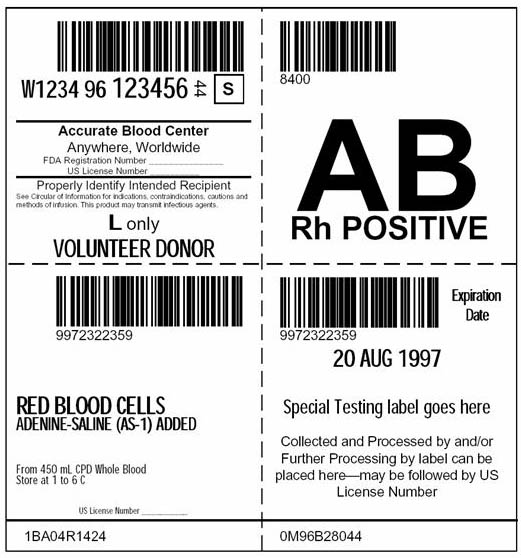CBER Presentation

Bar Code Requirements
Diane Maloney
Associate Director for Policy
CBER
January 20, 2006
Bar Code Rule
- Blood -Before the Bar Code Rule
- Bar Code rule
- Background
- Blood and blood components
- Other biological products
Before the Bar Code Rule
- Re: Blood and blood components
- Old regulation said:
- The container label may bear encoded information in the form of machine readable symbols approved for use by the Director, CBER
- In 1985, FDA recognized the use of Codabar
- In 2000, FDA accepted the use of one version of ISBT 128
Bar Code Rule
- For blood and blood components- machine readable information mandatory
- Required bar codes on most Rx drugs and some OTC drugs
- Not applicable to devices
Bar Code Rule
- Finalized: February 26, 2004
- Effective Date: April 26, 2004
- Products approved after effective date must comply within 60 days of approval
- Products approved before the effective date must comply within 2 years of effective date
Products covered by rule
- Most prescription drugs (including biological drugs)
- Certain over-the-counter drugs
- Blood and blood components
How bar coding can prevent medication errors
- Patient gets bar-coded ID bracelet
- Hospital uses scanner linked to the hospital's medical records
- Healthcare worker scans bracelet and drug
- Computer compares medical record to drug
- If no match- error message
Types of Errors Detected
- Wrong patient
- Wrong dose of drug
- Wrong drug
- Wrong time to administer drug
- Patient chart updated and prescribed medicine has changed
What blood components must bear bar codes?
- All blood and blood components for transfusion -including splits units, pooled units, pedi-packs and syringes
- Bottom line: If it's a blood or a blood component and it goes to the patient's bedside it must bear machine readable information.
Blood Establishments Must Comply
- Blood Establishments that:
- Manufacture, process, repackage, or relabel blood and blood components
- Intended for transfusion
- And regulated under the FDC or PHS Act
- Are subject to the rule
Blood and blood components
- At a minimum, the label must contain:
- Unique facility identifier(e.g. registration #)
- Lot number relating to the donor
- Product code
- Blood type (ABO) and Rh of the donor
Blood and blood components
- Label must be unique to the product
- Info must be surrounded by sufficient blank space so can be scanned correctly
- Info must remain intact under normal conditions
What blood components do not have to bear machine readable information
- Blood collected from a patient intraoperatively and transfused to that patient in the operating or the recovery room
- Autologous preparations of fibrin sealants or platelet sealants manufactured and used during surgery
- Drainage collected in the ER or operating room as part of trauma care for that patient
Requirements for other blood products
- Source Plasma used to manufacture plasma-derived therapies -SP not intended for transfusion - so does not need to bear machine readable information. However, the resulting products would be subject to the bar code rule
- Plasma derivatives (e.g. IGIV) are subject to the bar code requirements for drug products (see 21 CFR 610.67 and 201.25)
What about devices?
- E.g.
- filters and apheresis kits
- Rule DOES NOT apply to devices
- Devices present different regulatory issues and challenges
- Unlike drugs, devices don't have a standardized unique ID system like NDC
- FDA will continue to consider issue
What about "Tissues"?
- Human cells, tissues, and cellular and tissue based products subject to premarket approval (351 products) are subject to the bar code rule
- HCTPs regulated only under 361 of the PHS Act are not subject to the bar code rule
Exemptions from the bar code requirement
- FDA may exempt a product from the bar code requirements
- Factors:
- Compliance would adversely affect safety, effectiveness, purity or potency or not technologically feasible
- Alternative regulatory program renders bar code unnecessary for patient safety
Thank You.


